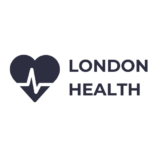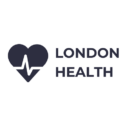Injuries and accidents happen all the time and will affect most of us at some point in our lives; while most injuries are mild and can be treated easily, some may be more serious so it is always beneficial to know how to react if you come across a person that has been injured or involved in an accident.
Some of the most common injuries are outlined below:
Broken bones
Broken bones are also known as fractures; fractures can affect any bone in the body and are a common injury.
Types of fracture
There are two main types of fracture; these include:
- Simple/closed fracture: this is a clean break. It does not affect any of the surrounding tissue and it does not break the skin
- Compound/open fracture: this is a more serious injury which causes damage to the tissue and the skin surrounding the bone
Within these categories, there are a number of different types of fracture, which are classified by the nature of the break; these include:
- Oblique fracture: this is a break which is slanted across the bone
- Transverse fracture: this is a straight rupture across the bone
- Comminuted fracture: this is often the result of a serious accident. It involves the bone being completely shattered into many different pieces
- Longitudinal fracture: this is a break which occurs along the length of the bone
- Compression fracture: this occurs when the bone is crushed and subsequently collapses
- Stress fracture: this is often a sporting injury. It occurs when a bone is placed under continuous pressure as a result of repetitive actions
What causes fractures?
In most cases, fractures are caused by falls, sports injuries and motor vehicle accidents. Young children and older people are more prone to fractures because their bones are weaker. Stress fractures are caused by repeated actions, which place pressure on a certain bone. These types of fractures are most common amongst athletes and usually affect the bones in the feet.
Symptoms of fractures
Fractures may cause a number of different symptoms, depending on the bone involved and the severity of the injury or accident; common symptoms include:
- Swelling
- Pain
- Restricted movement, but severe fractures may result in a temporary loss of movement
- Bruising around the affected bone
- Bleeding (if the fracture is an open fracture)
- Changes in the physical appearance of the affected body part (especially if the fracture is an open fracture)
Treating fractures
First aid treatment
If you come across a casualty that has suffered a suspected fracture try to encourage the casualty to stay still and support the injured limb. Don�t try to move the casualty or straighten the limb as this could cause more damage. Call 999 and wait with the patient until the paramedics arrive. Try to keep the casualty talking and reassure them that help is on the way. Don�t try and massage the affected area and don�t apply pressure to the limb.
Hospital treatment
Further treatment for the fracture will depend on the nature and severity of the fracture. In most cases the affected joint will be immobilised using a splint, cast or braces. Many fractures will be initially treated using surgery. During surgery the fracture will be reduced (this means the bones will be realigned) and once the bones are in the correct place the affected joint will be immobilised. Immobilisation ensures that the bone is held in the correct place and healing can begin. Usually the joint is immobilised for around three to eight weeks. In more severe cases, the fracture may have to be repaired using screws, rods or metal plates and recovery will take much longer. Open fractures may require treatment using plastic surgery, which will help to repair the damaged skin and reduce scarring.
Healing and recovery
Healing time varies according to the severity of the fracture. Mild cases usually heal within a few weeks while severe fractures may take a long time to heal. Once the case or splint is removed, the patient may have physiotherapy to build up the muscles and tissues around the bone and improve the range of movement around the joint; patients should avoid strenuous exercise for a period of time.
Preventing fractures
In order to prevent fractures, patients are advised to wear protective clothing during contact sports. In addition to this it is important to ensure that the bones are strong and healthy so make sure you eat healthily, take in plenty of calcium and exercise regularly. Exercise helps to strengthen the muscles and connective tissue around the bones, which will make them more resistant to injury. Women that have a history of osteoporosis and those going through the menopause may be prone to fractures so it may be beneficial to discuss this with your GP.
Bruises
Bruises are very common. They are usually caused by direct contact with the skin which may result from a fall, trip or accident. Bruises are a result of the capillaries beneath the skin bursting. The purple colour visible on the skin is the result of bleeding under the skin. Some people are more prone to bruising than others. Bruises are not usually a serious injury but if you suddenly notice that you are getting a lot of bruises you should see your GP as this may indicate liver problems or problems relating to blood clotting.
Symptoms of bruising
Most bruises start to appear shortly after an accident, trip or bang. Usually they are purple or red in colour but they often fade to a green or yellowy colour as the bruise heals. The area around the bruise may feel tender and sore and it may be slightly inflamed.
Treating bruises
Bruises do not usually require any treatment as they tend to heal quickly by themselves. You can apply ice packs to the area to help prevent swelling and reduce bleeding under the skin and raising the affected limb immediately after the injury will help to prevent blood from flowing to the injury. If you have been in a serious accident or have had a heavy fall you should get checked out by your GP or at an accident and emergency department. You may have broken bones or internal bleeding which may not be immediately recognisable. If you use ice packs, remember to wrap the ice in a cloth as this will prevent damage to the skin. If you don�t have ice packs handy you can use bags of frozen peas or ice cubes wrapped in a towel.
Bites and stings
Many insects and creatures sting and bite as a means of defence. Most people cope with these bites and stings very well and do not experience severe symptoms. However, some people have very severe reactions to bites and stings and these can potentially be fatal (this is often known as anaphylaxis).
Symptoms of bites and stings
Most people experience some itching, swelling and redness in the area where they have been bitten or stung, but this usually subsides quickly. People with anaphylaxis experience extreme reactions to certain types of bite and sting; symptoms may include:
- Wheezing
- Difficulties with breathing
- Racing heart rate
- Feeling dizzy and faint
- Swelling
- Itching
- Problems with swallowing
Treating bites and stings
If you have been stung you should remove the sting from your skin, which can usually be done by using your fingernails. If you can�t do it, ask somebody to help you. You should then wash the area around the sting and place a cold cloth on it. This will help to prevent swelling. If you experience pain, take painkillers.
If you have been bitten you may wish to use a topical cream to ease the swelling and itchiness. Creams containing hydrocortisone are usually recommended for insect bites.
In the event of a person having an anaphylactic shock, it is important to dial 999 as quickly as possible; if they lose consciousness prepare to give CPR.
Preventing bites and stings
Try to avoid damp, humid places where insects are abundant. This is particularly important if you are in an area where malaria and other diseases that are carried by insects are prevalent. Use nets at night and spray that is high in Deet if you are staying in these areas. In the UK and other developed countries you can use insect repellent spray and products such as citronella candles to deter wasps and insects. If you have a known allergy to bites and stings, make sure you tell people around you and carry an epi-pen (a shot of adrenalin) around with you. Make sure people know where you keep your injection and always keep a spare.
Choking
Choking is very common, especially amongst young children. In many cases it is harmless but it can be very serious and potentially life-threatening so it is important to know how to react if you come across somebody that is choking. Choking usually results from food getting stuck in the airway but it may also result from a person swallowing their own tongue or choking on their own vomit (this is common amongst people that have drunk a lot and then fallen asleep).
First aid treatment for choking
Try to encourage the person to cough. If this doesn�t work, ask the person to sit forward and pat their back firmly five times between the shoulder blades (you should try to support their chest with the other hand) and keep checking the casualty�s mouth for obstructions. If this still doesn�t work, you should carry out the abdominal thrust. This involves standing behind the casualty and putting your hands around their waist. Then, form a fist with one hand and pull upwards and inwards just above the tummy button up to five times. You should check the mouth for any objects which may have become dislodged as a result of the abdominal thrusts. If the casualty stops breathing you should prepare to begin CPR.
Concussion
Concussion can be a very serious injury. It is usually caused as a result of a trip, fall or accident that causes direct impact to the head. Concussion may be mild, moderate or severe. Severe concussion can have long-lasting, damaging effects to the brain.
What are the symptoms of concussion?
Common symptoms of concussion include:
- Dizziness
- Nausea
- Confusion
- Light-headedness
- Loss of consciousness (this is not always the case)
Treating concussion
Anyone that has suffered a head or spinal injury should be thoroughly checked over by a health professional. The effects of a head injury are not always visible and symptoms may start to develop some time after the original accident or injury. Patients with concussion are often monitored very closely because they may drift in and out of consciousness and their condition can worsen very quickly. Patients with severe concussion may spend a long period of time in hospital as this condition can be extremely serious. Rest is the most effective form of treatment for concussion and patients may also be advised to take painkillers.

